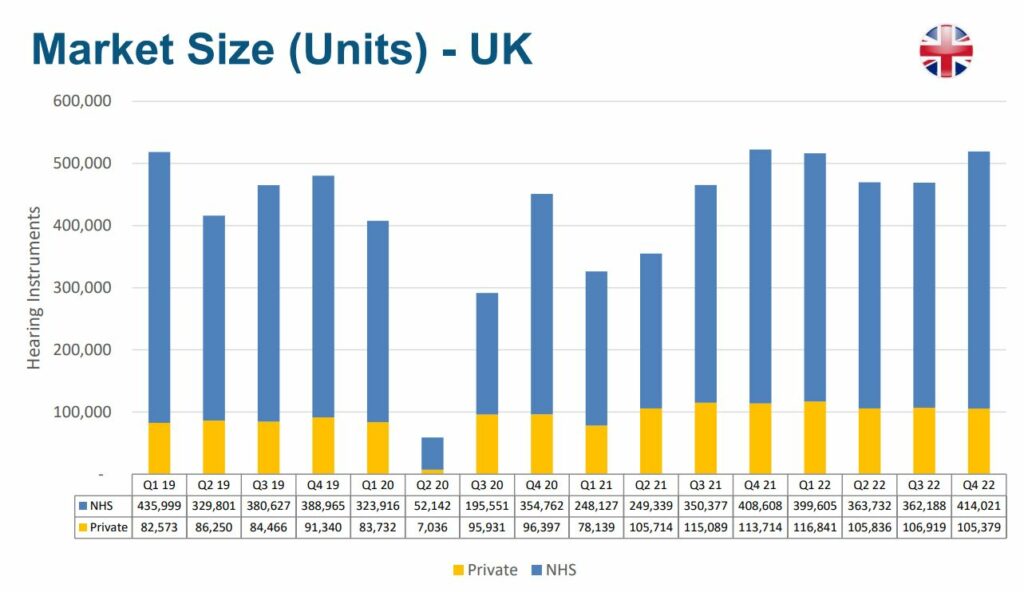The British Irish Hearing Instrument Manufacturers Association (BIHIMA) has released the latest Q4 data on hearing instrument usage in the UK and the Republic of Ireland (ROI), with positive results showing that the market for hearing instruments is moving back to pre-COVID levels.
Despite a flat three quarters, overall the full 2022 year was up 22k (5.4%) on 2021 and up 90k (26%) on 2020 in the UK. The data showed a similar trend in the ROI; although there was a slight reduction in Q4, the year was up 15.6% (13k) on 2021 and up 57% (35k) on 2019.

Private vs. NHS market
NHS volumes delivered the most impressive pick up, with a particularly strong Q4 compared to the rest of 2022. From 2021, NHS market size has gone up by 283k (22.5%) and 4k (0.3%) from 2019, bringing things back to pre-covid volumes.
“It’s undoubtedly been a challenging few years within the hearing instrument market – we’ve seen big drops that have taken a while to rebuild. The impact on those with hearing loss cannot be underestimated – but we are incredibly glad that the tides are starting to turn and that more people are getting access to hearing instruments, and faster.”
–Paul Surridge, BIHIMA Chairman
UK rechargeable products are continuing to take a slow but steady rise in the UK and NHS. For the ROI, Q4 showed a particularly strong increase; a positive outcome following a slight drop in Q3.

“On balance, Q4 has shown a slight slowing down in some areas but – as a whole – this has been a great year for the market. While we are well on the way back to pre-COVID volumes, it’s important to remember that we still have a lot to recover from the lost volume in 2020/2021,” said Paul.
Download the full Q4 report here.
About BIHIMA
BIHIMA represents the hearing instrument manufacturers of Britain and Ireland, working in partnership with other professional, trade, regulatory and consumer organisations within the health care and charitable sectors. We raise consumer awareness about the latest hearing technology and aim to influence government and policy makers to improve the lives of people with hearing difficulties.
Source: BIHIMA






